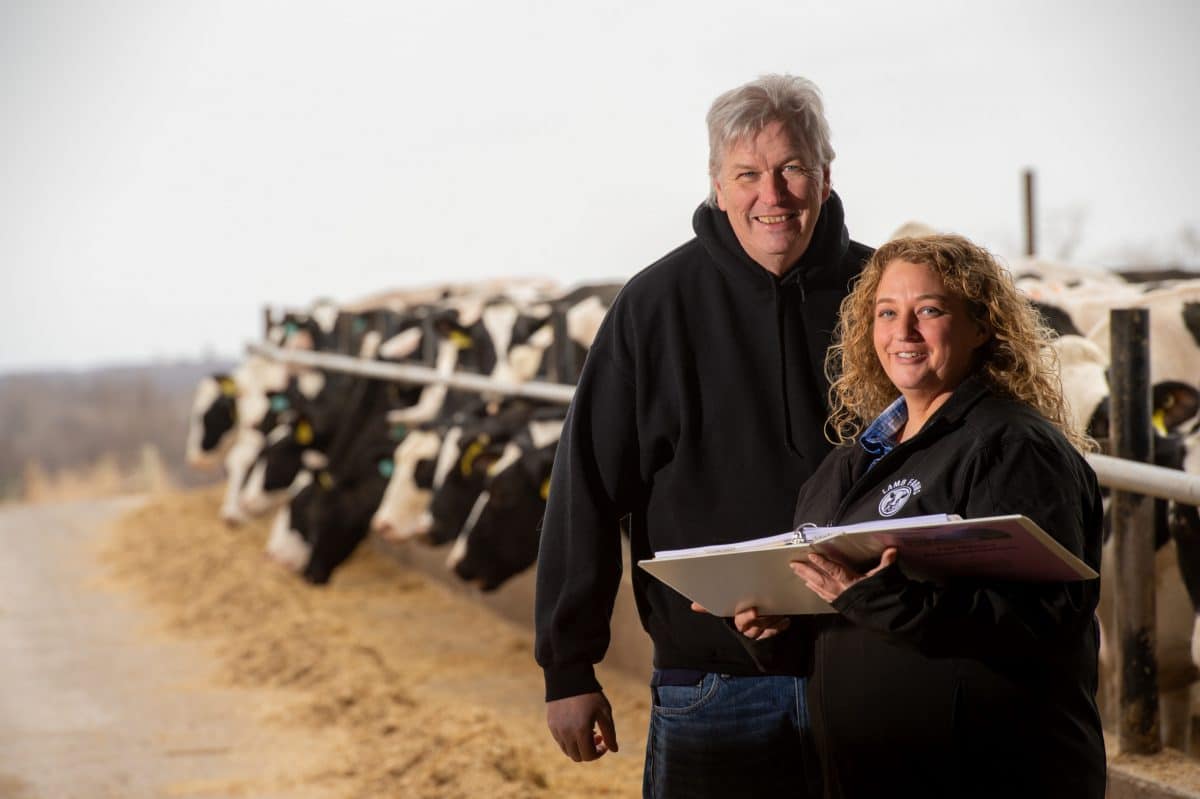Lamb Farms, Inc., Oakfield, N.Y., is proof that success in agriculture doesn’t have to run many generations deep. The dairy operation was founded by Leslie and Gordon Lamb in 1966, with Jim Veazey joining the partnership in 1976. The next generation is now running the show. The operation runs around 7,000 cows on four different dairies and will expand to around 8,000, and farms around 13,000 acres of primarily corn and alfalfa to produce feed for the cows.
However, they do some land swaps with neighboring farms, growing vegetables and wheat on some acres, says Janette Veazey-Post, part owner and business/crop manager. She works with Jonathan and Matt Lamb, who manage the business/cows.
Sustainability is key in making the farm successful. Manure from the dairies is separated and the liquid is applied back to the fields, recycling the nitrogen, phosphorus and potassium. Based on Adapt-N data and satellite imagery, commercial fertilizer is applied to supplement the nutrient needs of the crops. Adapt-N is a precision nitrogen management tool developed by Cornell University and now owned by Yara International.
Methane from the process of separating the manure liquids from the solids is collected and used by a third company. The solids are processed and recycled as bedding for the cows.
Lamb Farms’ focus on soil health is the foundation of how they produce high-quality forages and grains. The farming operation uses GPS-guided strip tillage and cover crops to conserve soil moisture and ensure the nutrients and the seeds are applied precisely. Rather than turning every inch of soil in a field, strip-tilling works just enough ground to plant the seed and apply fertilizer, leaving the rest of the soil undisturbed.
“Our strip tiller will go through and the line is automatically sent to the cloud,” she says. “So when the planter pulls into the field, they can pick that line and plant right behind. It’s really awesome technology.”
Veazey-Post uses a cloud-based record management system provided by the Western New York Crop Management Association Cooperative. All the crop nutrient information is recorded, enabling multi-year manure and chemical N application records, rotations, cover crop credits and calculated total nitrogen credits. It also allows the Certified Crop Advisors employed by WNYCMA access to the information so they can develop individualized field by field recommendations.
“I’m really big on making sure the crop is utilizing everything it needs to get the best production we can out of it, both yield and quality of feed,” she says.
Best Practice Management
- Use nitrogen stabilizer for fertilizers
- Use urease inhibitor
- Use nitrification inhibitor
- Use split application of nutrients
- Use fall application of manure for cover crops
- Utilize plant tissue testing to evaluate effectiveness of fertilizer program and as a diagnostic tool when needed
- Use foliar application
